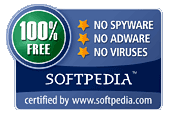 I've been tinkering around with win32 software development lately, and managed to make my LED notifier work with Windows 7. For the purpose I had to create a custom driver based on libusb which replaced the generic usb HID device driver that is part of windows. I also recompiled the command line tool "set-led.exe" using minGW32 and Dev-C++, and managed to pack a few snippets of python source code from my dBird notifier into executables by using the marvelous "py2exe" module for python 2.6..
I've been tinkering around with win32 software development lately, and managed to make my LED notifier work with Windows 7. For the purpose I had to create a custom driver based on libusb which replaced the generic usb HID device driver that is part of windows. I also recompiled the command line tool "set-led.exe" using minGW32 and Dev-C++, and managed to pack a few snippets of python source code from my dBird notifier into executables by using the marvelous "py2exe" module for python 2.6.. This made the device work, but without software to talk to it, the notifier was soon pretty boring. So I finally wrote another app, this time in VisualBasic 2008 Express (with .NET 3.5 SP1) which controls my LED notifier hardware (to date color selection is the only thing that is possible, plans are to use it for controlling my home-made ambient room lighting in the near future...)
This made the device work, but without software to talk to it, the notifier was soon pretty boring. So I finally wrote another app, this time in VisualBasic 2008 Express (with .NET 3.5 SP1) which controls my LED notifier hardware (to date color selection is the only thing that is possible, plans are to use it for controlling my home-made ambient room lighting in the near future...)here is a screenshot of an earlier
version - "LEDControl 1.27":
version - "LEDControl 1.27":
and here a download link for the latest version 2.05:
http://sourceforge.net/projects/ledcontrol/files/LEDCtl-205-Setup.exe/download
this is how the latest ver2.05 looks
like - note tray icon and tray menu
 I packaged all into a nice installer, which also simplifies driver installation greatly, since you can select to install them along with the application if needed. And now everything is copied to the right folders automagically, finally.
I packaged all into a nice installer, which also simplifies driver installation greatly, since you can select to install them along with the application if needed. And now everything is copied to the right folders automagically, finally.Update
now I finished work on the new release, version 2.05, featuring new GUI, more functions, smaller download size (50% reduced, now its only 1.98 MB small), comfortable setup routine, auto driver install, and "auto mode" color fading with less CPU load (all fading is written in C++ now). I also fixed a bug with the "off" button not working as it should, and added speed and brightness adjustment features for auto mode too.
Here I want to note too that I'm pleased to announce that my "LEDcontrol" software has been rated "100% malware spyware and virus free" by SoftPedia.com - thanks for taking the time guys.. See button at top of this article for a download link.
Also I want to make mention here of a nice little piece of software written by Scott Merryfield, "Scotts Gmail Alert", which checks your gmail or googlemail account periodically, gives on-screen alerts in case of unread message, and lights up my LED notifier hardware in the color corresponding to the sender's alert color! VERY useful software. Recommended.

